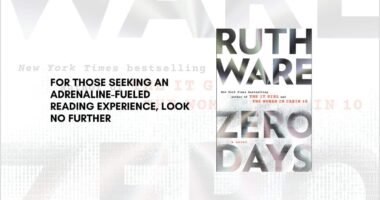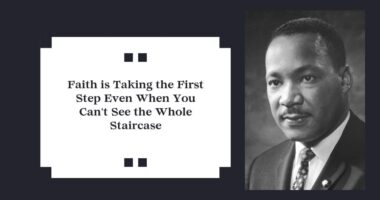Welcome to an epic journey through history as we explore the top 10 largest empires in human history. These grand empires spanned vast territories, conquered countries and shaped the world as we know it today. From the mighty British Empire to the formidable Ottoman Empire, each of these empires left an indelible mark on the lands they ruled. Join us as we delve into the rise and fall of these remarkable civilizations, uncovering stories of conquest, cultural exchange, and the remarkable individuals who led them.
Top 10 Largest Empires in Human History
The British Empire
Once upon a time,, from the 16th to the 20th century, the world saw the rise of a vast empire – the British Empire. Between 1815 and 1914, it covered an area of 33.7 million square kilometers (13 million sq mi), spanning North America, the Caribbean, Africa, Asia, and the Pacific.
The empire was established by a series of expeditions, explorations, and colonization efforts driven by ambition to expand British influence and trade. It flourished during the reign of Queen Victoria, who ascended the throne in 1837 and witnessed the zenith of the empire. With unrivalled naval power, the British Empire left an indelible mark on global history, shaping cultures, economies, and politics.
The Mongol Empire
In the 13th to 14th centuries, the world trembled at the might of the Mongol Empire. Between 1206 and 1368, this vast empire, the largest contiguous land empire in history, dominated an astonishing 24 million square kilometers (9.27 million square miles) of Asia, Europe, and the Middle East.
United under the visionary leadership of Genghis Khan, the Mongols conquered vast territories and assimilated diverse cultures. His unique horsemanship skills and military strategies allowed him to build an empire of unprecedented proportions.

The Russian Empire
From 1894 to 1917, the Russian Empire stood as a vast power, spanning 22.8 million square kilometers (8.8 million sq mi). The empire, which spanned parts of Eastern Europe, northern Asia, and North America, experienced its peak during the reign of Tsar Nicholas II.
The growth of the Russian Empire was the result of centuries of expansion, beginning with Ivan the Terrible in the 16th century. Its impact reached vast landscapes involving diverse cultures and vast resources.
The Qing Dynasty
Between 1636 and 1912, the Qing dynasty conquered parts of East Asia and Central Asia. As the last imperial dynasty of China, it presided over an empire spanning 14.7 million square kilometers (5.7 million sq mi). The Qing dynasty emerged victorious from the Manchu conquest of China, establishing an era of prosperity and cultural flourishing.
Under the rule of notable emperors such as Kangxi and Qianlong, the dynasty consolidated its power and expanded its borders, leaving an enduring legacy.
The Umayyad Caliphate
In the 7th to 8th centuries, the Umayyad Caliphate reigned supreme. From 661 to 750 AD, this Islamic empire, centered in Damascus, covered an impressive 13 million square kilometers (5 million square miles). Its influence spread from North Africa and the Middle East to parts of Europe.
The Umayyads established a powerful caliphate that fostered scientific progress, cultural exchange, and architectural marvels such as the iconic Umayyad Mosque.

The Yuan Dynasty
Between 1271 and 1368, the Yuan Dynasty, established by the Mongols, emerged as a major power in East Asia. Spread over 12.7 million square kilometers (4.9 million square miles), this empire extended to present-day China and Mongolia.
Under the leadership of the famous Kublai Khan, the Yuan Dynasty promoted trade, cultural exchange, and artistic achievements. Its influence spread throughout the Silk Road and left an indelible mark on Chinese history.
The Abbasid Caliphate
From 750 to 1258, the Abbasid Caliphate flourished as an Islamic empire of remarkable magnitude.
Covering approximately 11.1 million square kilometers (4.3 million sq mi), it extended from northern Africa and the Middle East to parts of central Asia. The Abbasid Caliphate ushered in a golden age of Islamic civilization, marked by advances in science, art, and literature.
Famous centers of learning such as Baghdad became symbols of intellectual activity during this era.
The Portuguese Empire
Between 1415 and 1580, the Portuguese Empire carved its way into history through maritime exploration and conquest.
This extensive empire covered approximately 10.4 million square kilometers (4 million sq mi), including areas in South America, Africa, Asia, and Oceania. Led by intrepid explorers such as Vasco da Gama, the Portuguese expanded their influence, establishing trading posts, colonies, and sea routes that opened up new horizons and linked distant lands.

The French Colonial Empire
From 1534 to 1960, the French colonial empire left an indelible mark around the world. With a geographic coverage of approximately 10.2 million square kilometers (3.9 million sq mi), it included North America, the Caribbean, Africa, Asia, and the Pacific.
French explorers, settlers and administrators traveled far and wide and established colonies and trading networks. The French heritage persists in the diverse cultures, languages and architectural wonders found in their former territories.
The Ottoman Empire
From 1299 to 1922, the Ottoman Empire emerged as a mighty power that left an indelible mark on Southeast Europe, Western Asia, and North Africa.
Spanning approximately 5.2 million square kilometers (2 million sq mi), it included present-day Turkey, Greece, Egypt, Iraq, and significant parts of the Balkans and the Middle East. Istanbul (formerly Constantinople) served as the vibrant capital of the empire.
Under the rule of notable sultans such as Mehmed the Conqueror and Suleiman the Magnificent, the Ottomans ruled diverse regions, influencing trade, art, and culture for centuries.
Also Read: History of Japan: 10 Best Books on Japanese History



